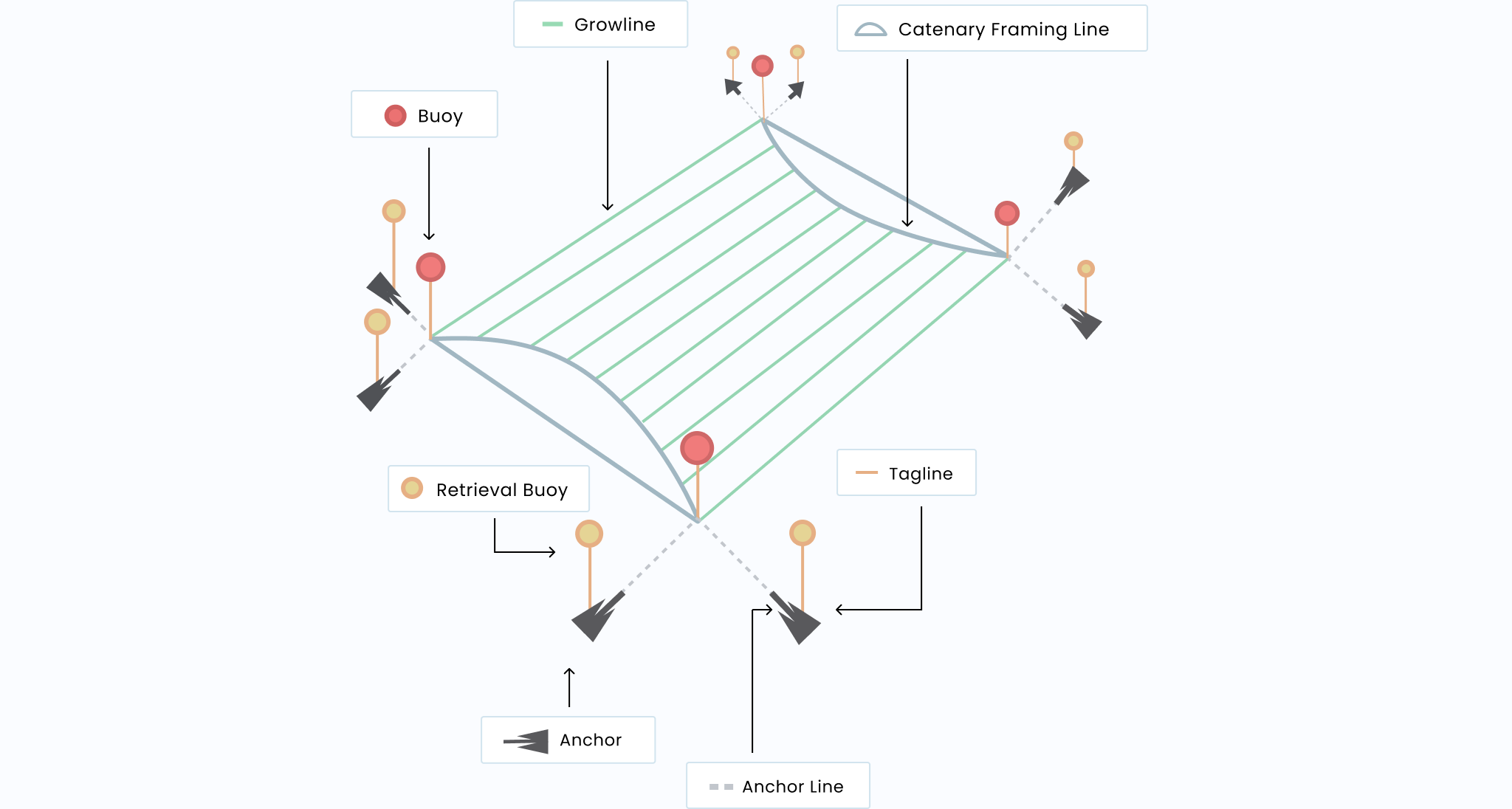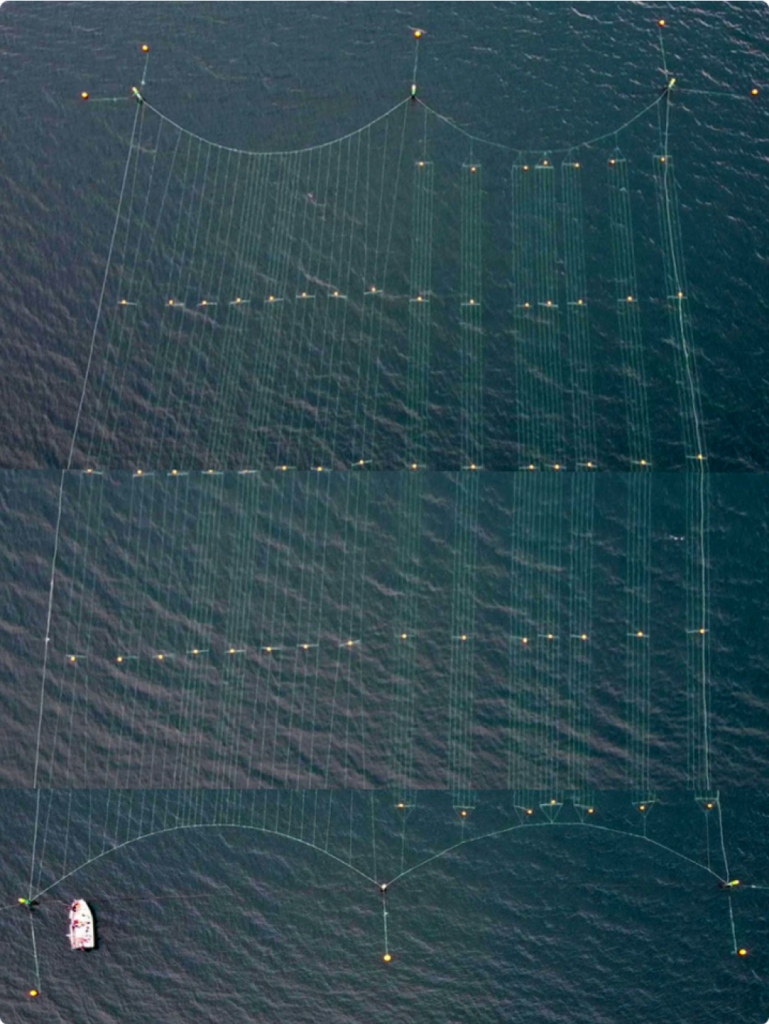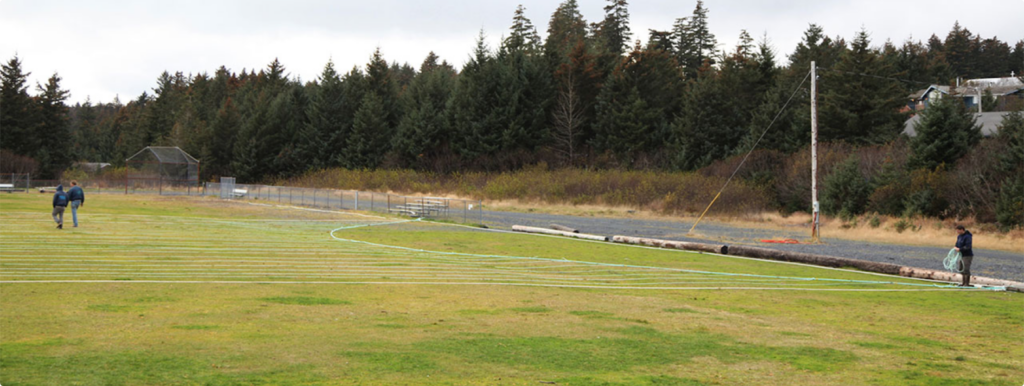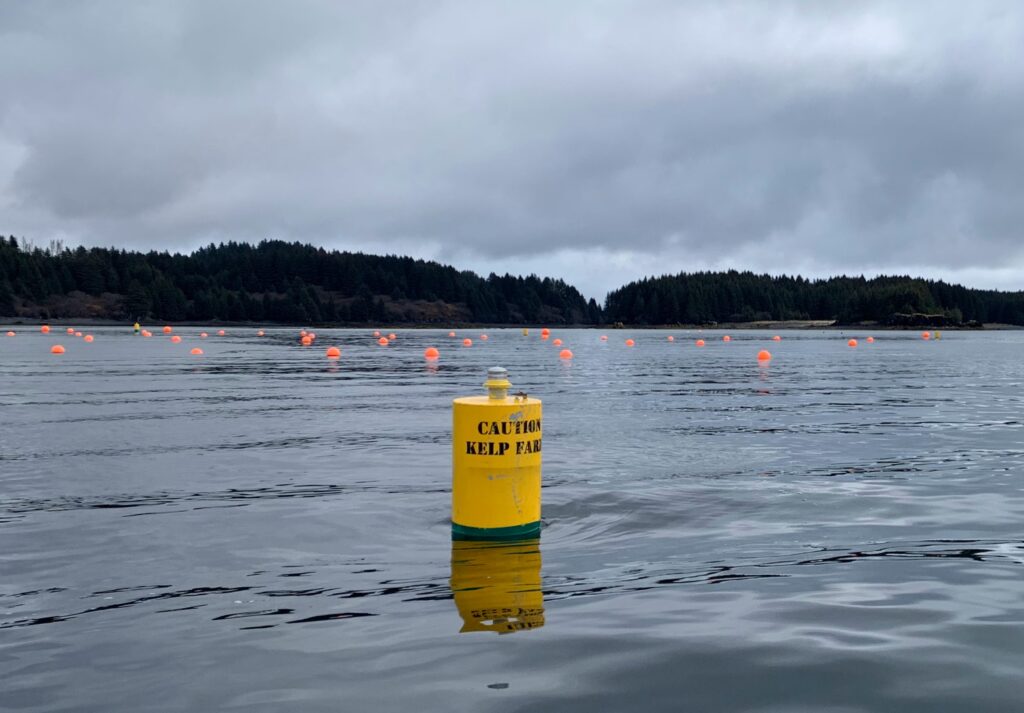We have included this array type to give you a visual of the full range of farm designs for kelp farming, but we do not recommend the use of this design for first-time farmers. It requires significant marine engineering expertise to design and install correctly, as well as substantially larger gear and equipment. For these reasons, this design is not supported in the Farm Design Tool.
Back to: Farm Design
The most complex array type is the multi-line catenary, or simply, the catenary array. Unlike the single-line and 5-line arrays which have two anchor points, the catenary array uses fewer but larger anchors to secure the corners of a matrix of closely spaced growlines. On either end of the array, a curved horizontal line, called a catenary framing line, is used to secure the growlines to the anchor system. Catenary arrays have been designed with as many as 55 individual growlines, spaced only a couple of feet apart.
Important Note
Catenary Array Diagram

The benefit of the catenary array is that it allows for much more densely packed growlines than other array types.
The trade-off is that the anchors it requires are much larger than those needed for single-line and 5-line arrays. One farm in Kodiak, Alaska uses pairs of 700-pound anchors at every corner of their multi-line catenary array. Similarly, there are fewer but larger buoys used to maintain proper buoyancy of the system.

Proper and consistent tensioning is critical to this design.
When laying out the system, each growline must be stretched (or pretensioned) with the same force before measuring and cutting it to length. When the lines are cut, assembled, and tensioned properly, the growlines will maintain their parallel positions, and the array will lay evenly in the water.

Due to the curved shape of the catenary framing line, it’s possible to maximize the growing area of the array by cutting each growline to a different length. However, this can sometimes lead to confusion, as it’s easy to get lines mixed up. Another solution is to cut all the growlines to equal length and have different length extension lines that connect the growlines to the catenary framing lines on either end. Either way, there is quite a bit of math that needs to be done to figure out the length to which each segment should be cut in order to maintain the proper shape of the catenary framing line.
We want to reiterate that this is a highly advanced design concept. Many farmers using the catenary system hire an engineer to help them with the design process. We do not recommend it for first-time farmers. If you’re considering a catenary array for your site and you’re not an engineer, we recommend that you hire one to steer you in the right direction.
It should also be noted that not every site can support a large-scale array, even with a large enough lease site.
The catenary array can produce several hundred thousand pounds of kelp on a single site, and many areas don’t have enough nutrients in the water to support that level of biomass. You should have a good understanding of the nutrients in your area—not to mention an established market for your kelp—prior to investing in such a large and complex array.
